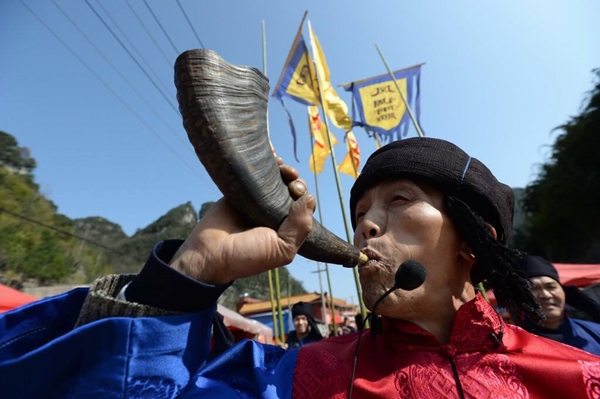Horns all over the place - big horns
The ox horns are the lip-vibrating instruments of the Han, Yao, Yi, Miao, Jingpo, Naxi, Nu, Dai, Buyi, Tujia, Gelao, Li and other ethnic groups. It is popular in Guangxi, Guizhou, Yunnan, Sichuan, Hunan, Guangdong, Hainan and other provinces, and each place has its own characteristics.

The Yao people in Nandan in northern Guizhou and Libo in southern Guizhou use the most distinctive ox horns. The Yao language is called Zhouou and Leli, which is literally translated as ox horn. The tube body is made of a particularly grown buffalo horn. The tip of the horn is sawed off. The pipe or hollow paulownia wood pipe is a mouthpiece, which is inserted into the round hole at the tip of the horn, and a 20-30 cm long bell mouth is attached to the horn mouth, which is made of brown hair and the resin of the local viscose tree. 100 cm to 120 cm long.
When playing, the horn is hung on the shoulder with a rope, the right hand supports the waist of the horn, the left hand holds the mouthpiece wood pipe, the bell mouth is facing the back, and the sound is low and deep, and the volume is louder. In order to increase the resonance of the horn and change the timbre, some water is often poured into the curved cavity of the horn and three or four pebbles the size of a fist are placed. It is suitable for playing slow and long tunes. On occasions such as Spring Festival, traditional festivals, festive harvests, etc., Yao family members gather together to play music to add to the fun. In addition to solo performance, it is often played in ensemble with bronze drums, Yao nationality drums, and laji. In addition to the Yao people, Tujia, Gelao, Li, Miao and other ethnic groups also use this big bullhorn.
 渝公网安备 50010702504639号
渝公网安备 50010702504639号